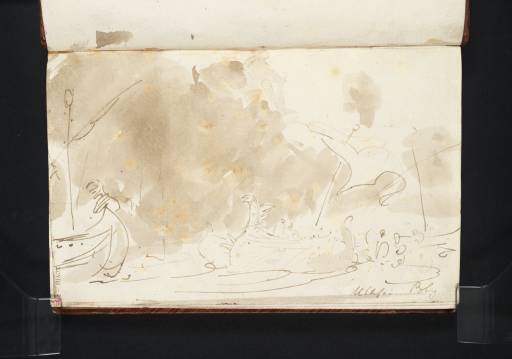1909
A.J. Finberg, A Complete Inventory of the Drawings of the Turner Bequest, London 1909, vol.I, p.253, XCVIII 5, as ‘Study for picture of “Ulysses & Polyphemus”’.
1974
Gerald Wilkinson, The Sketches of Turner, R.A. 1802–20: Genius of the Romantic, London 1974, p.84 reproduced in colour.
1977
Gerald Wilkinson, Turner Sketches 1789–1820, London 1977, p.121 reproduced in colour.
1984
Martin Butlin and Evelyn Joll, The Paintings of J.M.W. Turner, revised ed., New Haven and London 1984, p.184.
1990
Kathleen Nicholson, Turner’s Classical Landscapes: Myth and Meaning, Princeton 1990, pp.270 reproduced, 272–4.
1990
Andrew Wilton and Rosalind Mallord Turner, Painting and Poetry: Turner’s ‘Verse Book’ and his Work of 1804–1812, exhibition catalogue, Tate Gallery, London 1990, pp.125, 142.
1993
David Hill, Turner on the Thames: River Journeys in the Year 1805, New Haven and London 1993, pp.64 reproduced pl.77, 65, 167, as ‘Composition of “Ulysses [and] Poly[phemus]”’.
1998
Judy Egerton, National Gallery Catalogues: The British School, London 1998, pp.282, 284 reproduced fig.1, 289.
Gerald Finley, Angel in the Sun: Turner’s Vision of History, Montreal & Kingston, London and Ithaca, pp.62, 63 reproduced fig.36, 221 note 44.
2004
Kasper Monrad, David Blayney Brown, Anne Lyles and others, Turner and Romantic Nature, exhibition catalogue, Statens Museum for Kunst, Copenhagen 2004, pp.120, 124 reproduced in colour fig.12, 247 .

